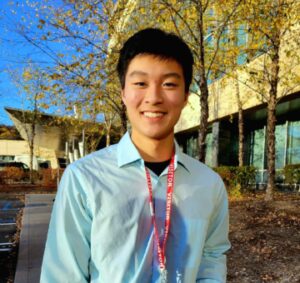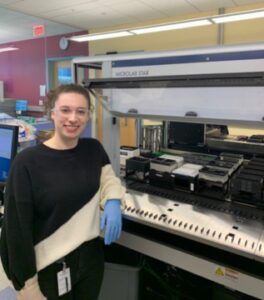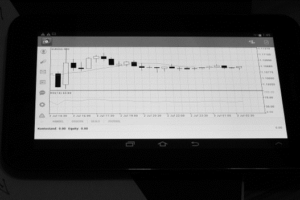Through the generous support of Regeneron, four times a year River Journal publishes the on-site report of a high school science student from the River Towns who is paired with a Regeneron scientist to experience what it is like to put STEM education to work in the real world.

To this day, my freshman-year Biology Honors class remains both the hardest class I’ve ever taken and the one I enjoyed the most during my time at Briarcliff High School. This rigorous class sparked my interest in biology and inspired me to take AP Biology as soon as the course was available junior year. Naturally, when my science research teacher offered me the opportunity to interview a scientist working at the Regeneron Genetics Center, I immediately accepted.
During my visit to Regeneron Genetics Center, I met Christina Beechert, a research and development specialist, who works to maximize the efficiency of gene sequencing. She aims to perfect and maintain the automation to achieve the goal of sequencing as many consented patient volunteers as possible. In this spirit, the lab sequences exomes, the part of the genome that codes for proteins, instead of entire genomes, a choice that sacrifices some genetic information (deemed mostly irrelevant) to speed up the process. The automation allows the lab to process samples overnight, producing upwards of 20,000 samples sequenced every week. Beechert estimated that with the help of automation, the number of people needed in this process is reduced from 75 to 12. In addition to constantly re-evaluating and planning the sequencing process to answer the question, “How do we maximize the number of samples sequenced?”, Beechert works in the lab to ensure the automation is running smoothly. Apart from the research, Beechert says she loves her job because of her amazing team and the people that work with her along with greater access to resources such as funding for projects and databases containing diverse genetic information.

Contextualizing her work, large-scale exome sequencing is part of Regeneron’s ultimate goal to understand the genetic drivers of disease so they can discover and develop new treatments for serious diseases. The first step to developing potential treatments is figuring out drug targets and what effect the treatments need to have on the human body to properly treat a disease. By sequencing massive amounts of genetic information from diverse backgrounds, the Regeneron Genetics Center can draw connections between genotypes (genetic information) and phenotypes (observable characteristics through the expression of genes). They look for specific genetic factors or mutations that describe the disease they are looking for. These special cases can show a pattern of how a specific expression or mutation in a gene can lead to protection from or higher risk for a certain disease. This information is then shared with other branches of Regeneron early-stage research to further explore how to mimic or target those genes for potential therapies.
During our interview, Beechert advised high school students looking to enter the STEM fields that “writing is a skill a lot of scientists don’t develop, so take humanities classes and practice communication in addition to STEM classes.” I took this advice to heart because I am a perfect example of this as I tend to focus a lot more on STEM-related classes and activities in school. In addition, she told me that successful people know how to study efficiently and balance their time wisely. I am honored to have had the opportunity to meet Christina Beechert and learn so much about the field of genetics. I will be sure to take inspiration from her advice to continue pursuing my career in STEM.







